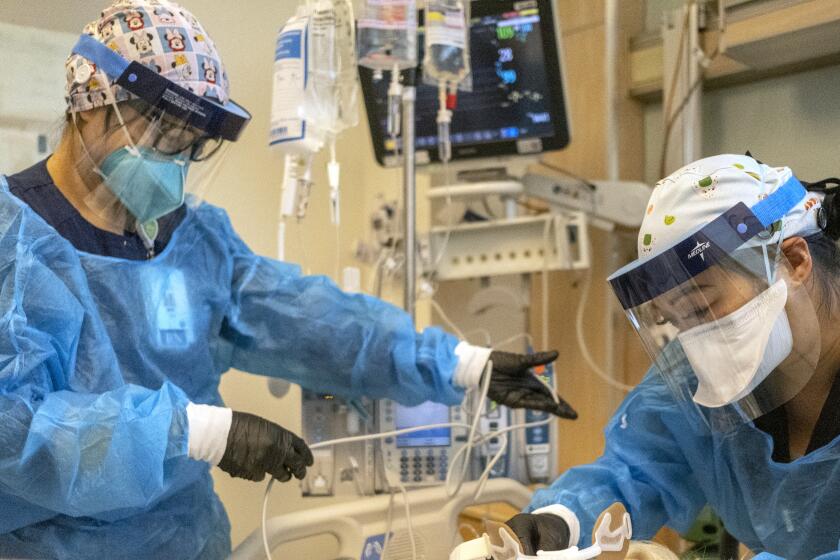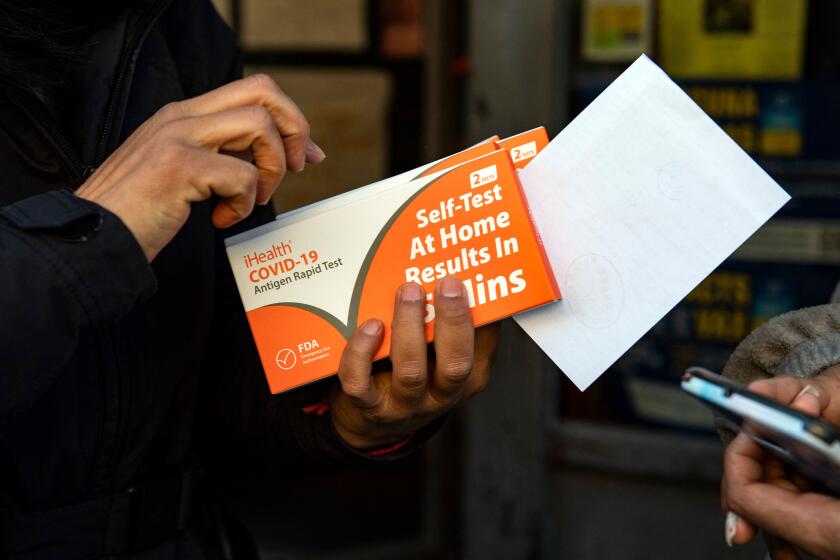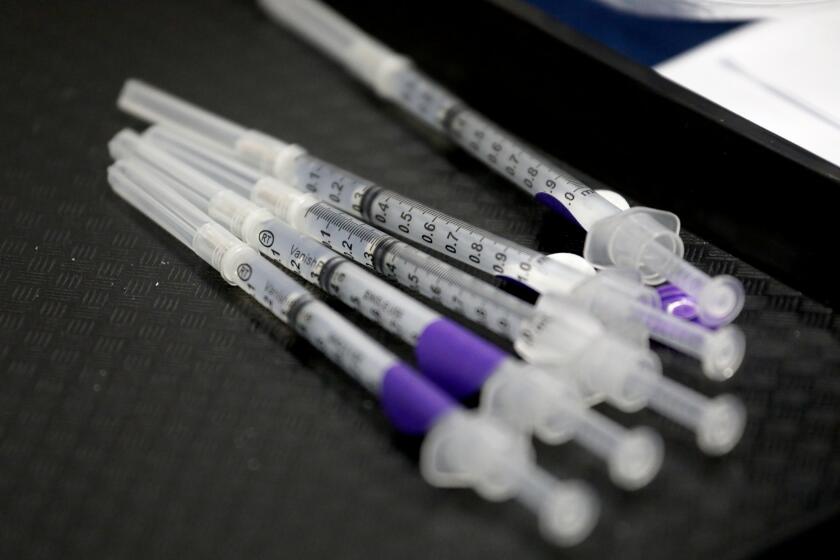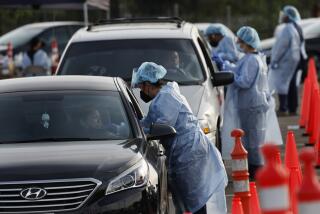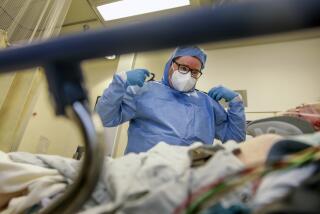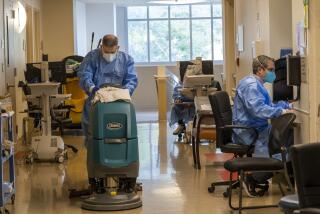Orange County hospitals filling up, ambulances delayed amid Omicron surge
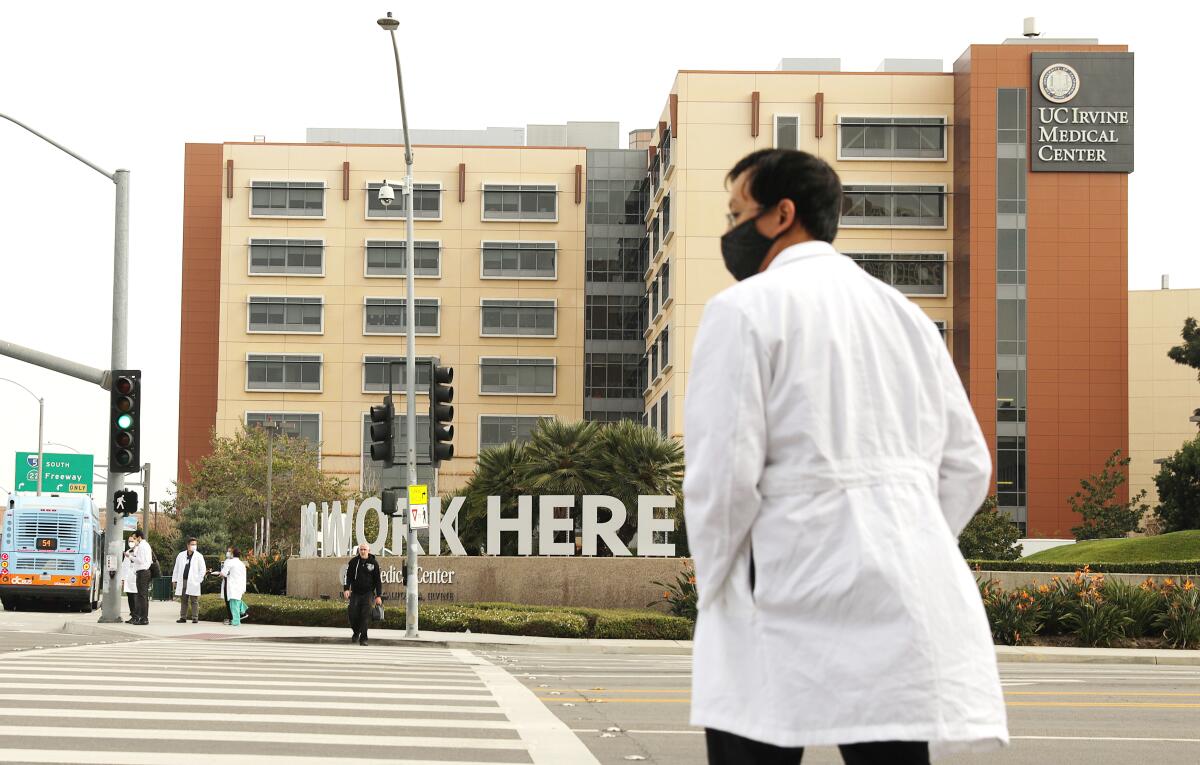
As the Omicron variant continues to sweep through California, hospitals are beginning to feel the strain. Ambulances are waiting longer to offload patients into emergency rooms in Orange County, echoing a similar problem in Los Angeles County as coronavirus infections increase.
In Orange County, at least nine hospitals have set up surge tents to increase capacity.
Dr. Regina Chinsio-Kwong, a deputy health officer with Orange County, urged the public not to come to emergency rooms unless it’s an emergency, and said it’s inappropriate for people to go there just to get a coronavirus test.
“Our hospitals are getting full,” Chinsio-Kwong said. “Our ERs are getting full. So if you are looking for a test, if you have mild symptoms, please consider first a virtual appointment with your healthcare provider to not overwhelm the ERs even more because we really want ERs and urgent cares to really just take care of the urgent situations.”
Roughly two-thirds of patients who have tested positive at the four hospitals run by the L.A. County Department of Health Services were admitted for something other than the coronavirus.
Hospitalizations statewide are rising across all ages, especially among the elderly and the very young, Chinsio-Kwong said.
Like elsewhere in California, Orange County’s coronavirus numbers are trending in the wrong direction, she said. The 4,646 cases reported Wednesday reflect only positive PCR tests and don’t account for positive antigen tests.
There were four deaths reported Wednesday, Chinsio-Kwong said.
For the final week of 2021, for every 100,000 Orange County residents, 29 were newly diagnosed as coronavirus cases. But new data show a rapid increase in cases nearly doubling to 54 for the most recent seven-day period.
“Our positivity rate is also on the rise,” Chinsio-Kwong said, referring to the rate at which coronavirus test results are coming back positive. “It went from 8.2%, and now we’re at 16.2%.”
As of Tuesday, there were 673 coronavirus-positive patients hospitalized in Orange County — triple the number from two weeks ago. The number of coronavirus-positive intensive care unit patients on Tuesday was 116, double from two weeks ago.
Californians have been racing to buy at-home testing kits. But chances are that the results aren’t making their way into the public health system.
Still, the latest numbers are far lower than a year ago. In Orange County on Jan. 4, 2021, there were 2,236 coronavirus-positive patients in hospitals, including 504 in the ICU.
And while there are fewer COVID-19 patients compared to last winter, there are many more people needing hospital care for non-COVID reasons — in Orange County and statewide — a major reason why hospitals are strained right now.
Around this time last year, hospitalizations peaked in California. There were roughly 53,000 patients statewide, including nearly 22,000 who tested positive for the coronavirus, according to Dr. Mark Ghaly, California’s health and human services secretary. As of Wednesday morning, the state’s total patient count for all reasons was approaching 51,000, including about 8,000 coronavirus-positive people.
All ZIP Codes in Orange County are showing high case rates, Chinsio-Kwong said. And most people who are contracting the coronavirus are unvaccinated, she said.
Unvaccinated people are roughly four times as likely to test positive for the coronavirus in Orange County. For the seven-day period that ended on Christmas, for every 100,000 unvaccinated residents, 83 tested positive for the coronavirus, but for every 100,000 vaccinated residents, only 22 tested positive.
Young adults ages 19 to 44 are having the highest case rates in the county. Among children, older teens ages 15 to 18 are having higher case rates.
The Omicron variant accounts for the majority of cases sequenced in the county, Chinsio-Kwong said. Last week, health data showed the variant accounted for roughly 20% of cases sequenced. As of Wednesday, that rate had jumped to 82%.
The county’s average daily number of vaccines administered is between 16,000 and 20,000, a figure Chinsio-Kwong called “great.” But more needs to be done to improve booster shots, she said. There are 837,313 residents who’ve received either an additional dose or a booster.
Across all age groups, 67% of the population is fully vaccinated, Chinsio-Kwong said.
Divorced parents have clashed when one parent doesn’t want the COVID vaccination. Family courts are weighing in.
She also addressed updated recommendations for isolation and quarantine.
Although current recommendations now state that those who test positive and don’t have symptoms should isolate and stay home for five days, the isolation period can end after Day 5 only if there are no symptoms, or symptoms are resolving and they test negative, she said.
“The antigen test is preferred in this situation because we do know that if you have a positive COVID test and you test at five days or later with a PCR, it’s likely going to be positive,” Chinsio-Kwong said.
For anyone who’s unable to test or chooses not to test, or who has symptoms continue, the period of isolation can end after Day 10, she said. Those with a fever should continue to isolate until the fever resolves.
Times staff writer Luke Money contributed to this report.
More to Read
Sign up for Essential California
The most important California stories and recommendations in your inbox every morning.
You may occasionally receive promotional content from the Los Angeles Times.
